Text
THERE’S SOMETHING ABOUT MARY (1998)

In 2019, Peter Farrelly crossed the Dolby Theater stage at the 91st Academy Awards to proudly accept three Oscars, including Best Picture, for his drama Green Book. For any director, these Oscars would be a crowning achievement. To Farrelly, this was also an induction into the Hollywood fraternity—that rarefied group from whom he and his brother, Bobby, had long stood apart. The Farrelly brothers had at one time been maverick comedy filmmakers whose brand was just the right combination of offensive humor and heart. As Farrelly raised his Oscars for the crowd, he was no longer the goofy outsider who directed gross comedies. He was an important filmmaker.
Be that as it may, Green Book—despite the awards coronation—was every bit the offensive relative to Peter’s work with Bobby. The film had generated tons of criticism for its handling of race, leaning heavily on cultural stereotypes for its humor and pathos, and presented a morally superior view of white privilege while possibly misrepresenting the only nuanced Black character in the film. These criticisms dominated the Monday Morning Oscar Quarterbacking on podcasts and Twitter threads, putting just a little bit of tarnish on the filmmaker’s new trophies.
Criticism and controversy are not new to either Peter or Bobby Farrelly. Since their directorial debut in 1994 with Dumb & Dumber, they have walked the tightrope of all offensive comedians. As Roger Ebert said about them, their movies are “crude, vulgar, cruel, insensitive, scatological, perverse, and politically incorrect.” Gene Siskel made sure he added “gross and raunchy” to that list. They meant this as a compliment. People died watching Jeff Daniels experience exploding diarrhea in Dumb & Dumber, Woody Harrelson share a post-coital cig with his grotesque landlord in Kingpin, and Jason Alexander wag his tail in Shallow Hal. Few would call any of their oeuvre particularly deep—and should probably laugh at the pretense of referring to their filmography as an oeuvre.

The most controversial, and arguably most popular, film of the Farrelly’s career is 1998’s There’s Something About Mary. This one focuses on a generic loser named Ted (Ben Stiller), who holds a flame for his teenage crush, Mary (Cameron Diaz). Because Ted believes Mary may hold the key to his happiness, he hires a private dick named Healy (Matt Dillon) to find out where she is. Healy falls under Mary’s spell and leverages his influence to keep Ted away. As played by Diaz, Mary is a “smart girl who has a lot going for her”; however, Mary isn’t particularly observant and awfully naïve. Every man she encounters falls for her, and she has a litany of stalkers who will do anything to possess her.
Based on description alone, There’s Something About Mary presents as a harmless rom-com, but the Farrelly’s bring their edgy style to the film. This movie is packed with indecent images. Ted’s “Franks N’ Beans.” Mary’s “hair gel.” The fish hook. Magda’s makeout session with her dog, Puffy. Woogie’s face. The gross stuff is what it is, but the material that sticks are the stalking and how the depiction of Down’s Syndrome impacted perception of those with mental handicaps. Reviewing this film through the lens of 2021 causes even more cringing than it did in 1998.
You could tell that even in 1998 there was a narrative building around this movie. In a press interview, Ben Stiller said, “I wouldn’t necessarily associate this film with deep social commentary. I think it’s a sweet movie that you can go out and laugh at.” Diaz added, “With this film, I know that [the Farrelly Brothers] wanted to have characters—people—that were important to the audience. They wanted a love story that people could really get involved with, as well as have the comedy.” She also said more recently in 2018, “Peter and Bobby have such heart in all of their movies. No matter how shocking the comedy is, there is so much that is inherently good about the story and the characters that really appeals to people and it makes the laughter at the jokes a little more forgivable.”
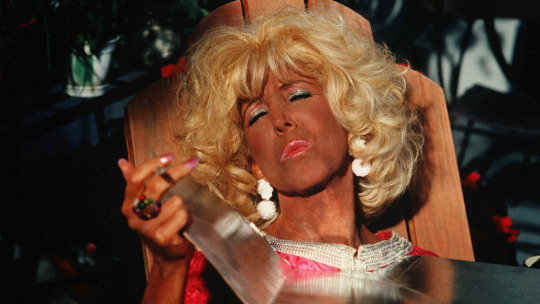
From the get-go, everyone on the project knew somethings were going to be potentially problematic. Studio brass expressed some concern over the decision to make an R-rated comedy. The PG-13 rating had squeezed out the R-rated comedy to the point that very few were being made. Movies like Friday (1995), Flirting with Disaster (1996), Private Parts (1997) and The Big Lebowski (1998) all had pretty limited audiences. No one was convinced an adult comedy could even make a buck, let alone entertain. Besides, the Farrelly’s previous film, Kingpin (1996), had bombed, so could they even be the duo to make a lucrative R-rated comedy.
On the set, there were concerns, too. Diaz worried about whether the infamous “hair gel” scene was a bridge too far, and might possibly be the ruin of her rising career. During the scene where Puffy falls out a window, Bobby Farrelly needed to get the right reaction from Diaz and co-star Lin Shaye, so he dropped his pants and wiggled his ass. It wasn’t the first time the director had done this, either on or off set. According to Peter, Bobby liked doing this; it would one day get him in some trouble. And the production was surprised when Plantation City Hall, whose veneer was redressed to become the exterior of Ted and Mary’s high school, asked to have their name removed from the film’s credits because they didn’t want to be associated with anything “lewd and offensive.” The studio was also worried about the decision to include a close up of Ted’s “franks n’ beans” after he catches them in his zipper. That shot was got by creating a 4’x2’ prop, and inserted just in case it needed to be cut out of the film. Fox chairman, Peter Chernin, after seeing a test screening, told the Farrelly’s, “It’s perfectly reprehensible; don’t touch a thing.”
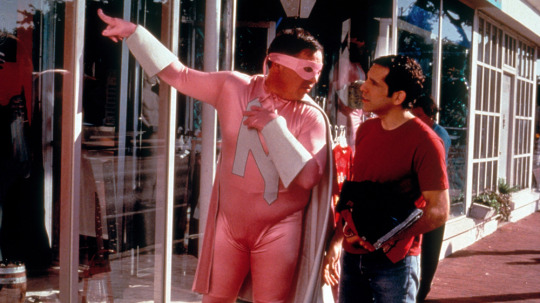
There were also questions about the portrayal of Warren, Mary’s brother, who has Down’s Syndrome. Peter Farrelly said, “Whenever you did [write disabled characters] back then, it seems the studio was, ‘No, no, no! People are uncomfortable’ [with disabilities]. And I’m like, ‘No, they’re not. That’s bull. People have disabilities, so let’s see them.” Warren was based on a next-door neighbor of the Farrelly’s to whom the family was close. The young man is also cast in the film as one of Mary’s students. It also seems casting may have been one way to circumvent controversy surrounding Warren. Initially, it looked like the part would go to Chris Farley, who was hot at that time for his work on Saturday Night Live. However, Farley’s energy may have contributed to seeing Warren as a caricature, so the production went with W. Earl Brown. Brown wanted to play Warren as a real person, not a cartoon. He said in a 2018 interview with Variety, “I just feel instinctively, ‘If you goof this, if you play it broad and you try to be funny, it ain’t going to be funny. The audience is going to hate you because you are mocking somebody with a handicap,’” This didn’t stop anyone from seeing the film as a possible Pandora’s box of disabled stereotypes and disparagement humor.
The other controversy surrounding this movie has become more pronounced in the social media age. Does There’s Something About Mary normalize sexual predation and stalking? Critic Rachel Verona Cote said, “Humor that takes stalking seriously requires nimbleness and nuance that the Farrelly brothers lack; instead, they trade in crude jokes underpinned by the structurally misogynist ‘boys will be boys’ mythos.” There may be something to this criticism. In 2016, a University of Michigan research study, entitled “I Did It Because I Never Stopped Loving You,” found that women are often more tolerant of aggressive male behavior because of the normalizing of such behavior in romantic comedies. There’s Something About Mary was one of the films cited in the report, which suggested that the film’s excusal of male aggression supported “stalking myths,” which were defined as “false or exaggerated beliefs about stalking that minimize its seriousness.” Findings like these also support research that has been going on since Harriet Martineau began pioneering the field of gender conflict. The Martineau Theory suggested that exposure to disparaging humor towards a particular group often has the result of inducing tolerance towards prejudice directed at that group. Martineau’s work focused on gender theory, but could just as easily be applied to any group.
Obviously, there is no truly right or wrong answer in regards to There’s Something About Mary, but as you watch the film, it seems a new lens may need to be applied. Even as we laugh at the cringeworthy humor of the Farrelly Brothers, what is their target? What behaviors are they excusing? Ben Stiller suggested there was no deeper political meaning to the film, but does that deeper meaning have to be intended to be valid? As There’s Something About Mary nears its 25th anniversary, we now look at it with more nuance, also with the realization that Peter Farrelly’s Oscar victories for Green Book suggest his once outsider take on comedy and culture is now firmly at the center.
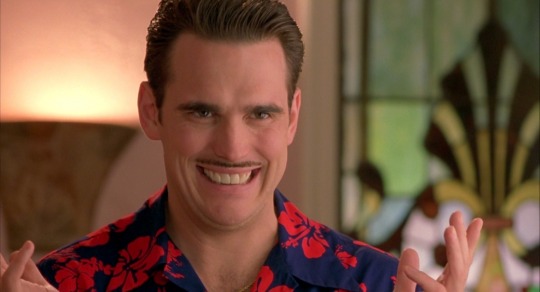
#There's Something About Mary#Peter Farrelly#Bobby Farrelly#Farrelly Brothers#Cameron Diaz#Matt Dillon#Ben Stiller#Lin Shaye#Comedy#Romantic Comedy#Offensive Comedy#Green Book
3 notes
·
View notes
Text
Saying His Name Again: CANDYMAN (1992)

Say his name five times and he’ll appear. It’s a fun game, to be sure, fueled by the adolescent thrill of the unknown. In every culture, there is some form of the bogeyman meant to encourage the push-pull of compliance and temptation. In the Netherlands, they are the Bokkenrijders, a terrifying group of goat riding thieves come to steal your soul. In Spain, it’s the Hombre del Saco, a spindly, unhealthy looking man who kidnaps unsuspecting children in daylight and carries them off in his sack to eat them. For the Russians, it’s the Baba Yaga, a powerful witch who rides around in a giant flying mortar with her pestle, ready to snatch people and grind them into an edible paste. And in Mexico there’s La Llorona, the vengeful child killing ghost whose haunting cries precede the stealing of children she confuses for her own.
For English horror writer, Clive Barker, his bogeyman was the Candyman, a waxen faced, sapphire-eyed creature whose body swarmed with bees that buzzed when he spoke. “Sweets for the sweet,” he says, quoting Shakespeare as he takes his next victim. Barker was inspired by British folklore, which includes boggarts and brownies and Bloody Mary and the actual bogeyman, and he thought it would be interesting to see how the presence of urban legends might impact a poverty-stricken community in Liverpool. From this his short story “The Forbidden” emerged, and it might have just existed as yet another grotesque tale in his Books of Blood anthology had it not been for Alexandra Rose, an actress looking for the perfect part. She found it in the character of Helen, a grad student swept up in her pursuit of the truth behind the legend of the Candyman.
Mrs. Rose brought Barker’s story to her husband, Bernard—a music video director best known at the time for his direction of Frankie Goes to Hollywood’s “Relax” and UB40’s “Red Red Wine”—and suggested he direct the film adaptation. Since Bernard Rose shared an agent with Clive Barker, he was able to set up a meeting, and Barker willingly sold Rose the rights to the story. The two began working together to adapt the story for the big screen. Pretty quickly they realized setting the movie in Liverpool was a bad idea and opted instead to set it in Cabrini-Green, a housing development in Chicago, noted as a hotbed for drugs and gang violence resulting from the city’s neglect. They realized their bogeyman would be far more imposing as a Romantic Black man with a hook for a hand than as the walking talking ball of wax from the short story.

The production of Candyman is just as defined by the folklore surrounding it as is its script. To hear Rose, or Tony Todd—the Candyman himself—or Virginia Madsen talk about the film is to hear some anecdotal whoppers about shooting in the Cabrini-Green projects under the fear of being shot by more than a camera, hypnotism, bee swallowing, and a bunch of other delicious tales. What is often left out is how Alexandra Rose discovered she was pregnant before the shoot was to begin, which devastated her because she saw herself in Helen. She reached out to Madsen to replace her, even though Madsen was cast to play Bernie, Helen’s best friend and research partner (the role eventually played by Kasi Lemmons). Madsen agreed, but even that was tough, since she was allergic to bees, and was afraid of working so closely with them in her scenes with the Candyman. Casting Madsen was in such doubt that Sandra Bullock—still a few years from her star-making performance in Speed—was almost cast as Helen instead. Eventually Madsen agreed because, as she put it, “You know actors, we’ll do anything for a paycheck!” And because Rose promised to keep an ambulance on set in case of an allergic reaction.
Even Tony Todd’s iconic performance almost didn’t happen. The producers nearly cast Eddie Murphy in the role of the Candyman, but ultimately balked at Murphy’s lack of size and salary demands. The 6’5 Todd was cast instead, and a horror icon was born. With his gravelly voice and remarkably brave willingness to allow his mouth and body to be covered with bees, Todd created a character of remarkable depth, a character just as forged in folklore as everything else associated with this film. The Candyman’s origins are rooted deeply in that special kind of American racism. He was a Black man born and raised in the upper crust of society. Well-educated, he was a man of manners and talent. But his love for a white woman bothered her father so much he hired some goons to chop off the Candyman’s offending hand, dip him in honey, and leave him to the bees. Todd plays the monster with the seething melancholy of Mary Shelley’s Frankenstein, not Boris Karloff’s. His Candyman is grounded in myth, not camp.
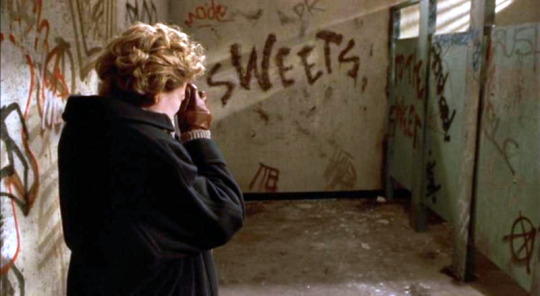
Candyman is the embodiment of the best urban legends and folk tales. Repeat them enough, they become real. Say his name five times and he’ll appear. Tell the stories over and again and people will believe them. The idea of the Black predator stealing white women is a folk tale; it’s a story repeated throughout the American tradition. In Tony Todd’s vision of the Candyman, the monster’s pain is rooted in the history of American slavery, and he is a vengeful spirit. In Bernard Rose’s vision, “a very strange thing happens in horror movies: people actually sort of identify with the bogeyman—it’s him they dress up as, not the victim. And Candyman is an avenging angel.” The beauty of the folk tale is its malleability—in one teller’s hand it is damnation; in another’s it is salvation.
That makes sense because the interpretations of Candyman are in the eye of the beholder. For some, like noted Black filmmaker Carl Franklin (Devil in a Blue Dress), “There’s no question that this film plays on white middle-class fears of Black people.” The NAACP, who eventually gave the film their blessing, were concerned about “repeating the trope of the Black man as someone to be feared.” To Virginia Madsen, the film is a refutation of the idea that women are punished for their sins: “Helen,” she says, “never allows herself to be a victim to Candyman. Horrible things might happen to her, but she fights back.” Many film critics look to the film as a notable example of sociological horror, showcasing the true horrors facing the impoverished and the consequences of America’s refusal to deal with its history of vile racism. Rose, despite recognizing the film’s political elements, focuses on its metaphysical ones: “But Candyman really poses the question that if God exists because we believe in him, what would happen if the worship ceased? . . . People have a deep need to believe in something beyond themselves, especially when they’re living in an appalling place like Cabrini-Green. They could be shot at any time, but a creature like the Candyman could do something far worse to them. That belief allows the people to dodge bullets in the stairwells.”
Whether the film is a political statement about poverty and race, or a reinforcing of tired racial clichés, or a metaphor for the presence and power of God to keep us in line, Candyman is a true cinematic folktale that gains power with each re-watch. Like the bees buzzing inside of him, the story both within and around the film sticks to the bones.
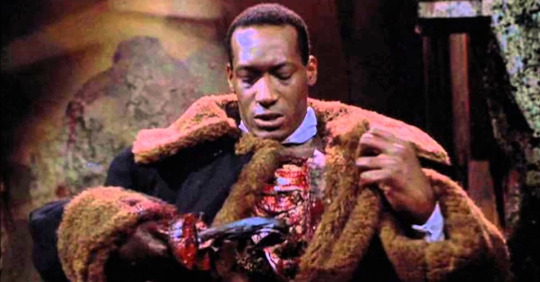
3 notes
·
View notes
Text
DIGGING UP THE MARROW (2014)

Butt-Numb-a-Thon, at least until 2017, was an Austin institution. The 24-hour movie marathon, held at the Alamo Drafthouse, was established in 1999 by Ain’t-It-Cool News creator and noted sexual miscreant, Harry Knowles, for the most narcissistic of purposes: as a birthday party. Despite this, the invite-only film festival had hosted a number of highly-coveted world premiere screenings, including: The Lord of the Rings trilogy, Magnolia, Knocked Up, V for Vendetta, 300, Kingsman: The Secret Service, Chicago, Dreamgirls, and The Passion of the Christ.
Adam Green, the horror filmmaker best known for the slasher series Hatchet, premiered his thriller Frozen at BNAT before it wowed Sundance. By 2013, Green was an established filmmaker, and he had a film he was just dying to audience test—a strange genre hybrid called Digging Up the Marrow. After running the rough cut by some of his more critical friends in the filmmaking community, Green sent the film to Knowles for consideration.
Knowles jumped on the film after watching the cut, which was little more than edited dailies that only included temporary sound and score, and zero visual effects work. Green was stoked. The audience at BNAT was not a typical one; it was a cross-section of the film critic community. Some were genre junkies, others not so much. If he was to finish this film, he wanted their blessing. And Knowles gave him the best opportunity, slotting Digging Up the Marrow at 6am. If the film played well, Green would know it wasn’t hype—that feeling would be in short supply by 6am after a night including the world premieres of The Hobbit: The Desolation of Smaug and The Wolf of Wall Street.
Any filmmaker would have been amped and nervous to have their film play for the first time at BNAT. However, Green was especially nervous. Digging Up the Marrow wasn’t any film to him; it was a personal project, one in which he had more than money and time and sweat invested.
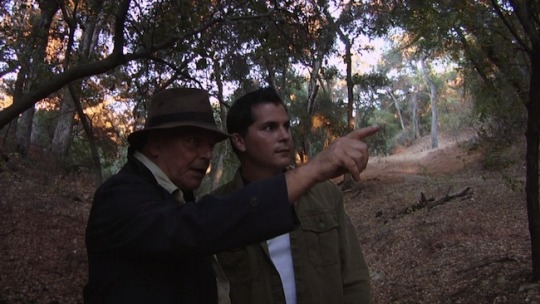
The origin of Marrow dates back to 2010, shortly after Frozen’s premiere at Sundance. The film’s reception had his team ready to start a new project. They wanted to do something low-budget and very indie. The idea that eventually turned into Marrow arrived as a curious package from a die-hard fan. In it, this fan had curated a bunch of documents, photos, and maps to prove to Green that Victor Crowley, the slasher killer of Hatchet, was a real person, and that Hatchet had gotten his story all wrong. The maps and photos of swamps detailed all sorts of errors within the movie. Normal filmmakers might be terrified by this level of obsession, but not Green. He was inspired by the level of commitment and suggested heading to the swamplands with a skeleton crew to document this fan taking them on a tour to prove the “truth” about Crowley. As cool as the idea sounded, Green’s partners changed his mind by pointing out that with Hatchet II on the way in seven months, it might not be a good idea putting additional content on the market. Besides, who the hell knew if this fan was only trolling them or was a bona fide looney who might leave their bodies in a swamp, Crowley-style.
So, Green abandoned the idea. It would resurface about a week later as he flipped through a pamphlet given to him by a fan during a long day of signing autographs at a Los Angeles Fangoria convention. The fan hadn’t shared his name, but as Green looked over the pamphlet, the fan’s identity dawned on him. The pamphlet was for an art exhibit called lDigging Up the Marrow,” by acclaimed horror artist Alex Pardee. Fireworks went off once he realized the fan who gave it to him was Pardee himself! Pardee had built a reputation for creating horrific storytelling art exhibits. In “Marrow,” Pardee is commissioned by a Boston police detective named William Dekker to paint the real monsters he claimed to see while on the job. Green wanted to adapt this idea, but with a twist that in addition to Pardee, he would also be asked to capture the monsters on film. After meeting with Pardee, Green wrote the script within 3 months, and the film was ready to begin production.
Green told the expectant horror press that he was making an “art documentary” which made them immediately seek other stories for clickbait. He cast all the actors to feature as themselves, except for veteran character actor, Ray Wise. Wise had reached out to him on the strength of Green’s segment in a film anthology called Chillerama, wanting to work with him. After showing Wise the script, the actor signed up to play Dekker. The film was shot in Green’s offices, his editor’s basement, and on the property of a family in Santa Clarita who almost didn’t agree to let the production use their land for a cemetery set until the owner learned Green had directed Frozen. The decision was made early to create all of the monsters as practical effects, sculpting directly from Pardee’s art. Not exactly an easy process, namely because of the nature of Pardee’s art, which doesn’t adhere to the conventions of basic anatomy. Pardee put it like this: “I like imagining things I haven’t seen. If it’s a shape, if it’s a color, if it’s a tooth, if it’s a type of hand, if it’s a monster, if it’s a car . . . I like the way things shouldn’t be. I think that’s where the inspiration draws from. How can I make this . . . not.”

The production of Digging Up the Marrow went as well as anyone could have hoped. But things took a turn for the worst as post-production ramped up. Three months into the finishing process of the movie, one of the actors—and one of Green’s best friends—Dave Brockie, died of a heroin overdose. Brockie was best known as Oderus Urungus, the insane lead singer of heavy metal band GWAR. Devastated, Green had to be talked out of removing the footage of Brockie, which showed the singer in full GWAR costume, shouting “I am a monster, I’ve always been a monster, and after I’m dead I’ll be a dead monster!” Perfect for the movie, but not for Green’s heart. The thought of leaving the moment in wrecked him, but eventually he left it, if only for the sake of Brockie’s fanbase, whom he thought deserved to see Brockie’s final screen performance.
However, Brockie’s death was only the opening salvo. Three weeks after his death, Green’s wife filed for divorce and the couple separated. Like Brockie, she was also in the film, sharing a bed with Green and even sharing an on-screen kiss. Removing her was also the first thing on Green’s mind, but his team again had to stop him because of what losing her four minutes of screen time would do to their budget and story.
So Green suffered the heartache of editing and directing post-production by watching images of his dead friend and ex-wife over and over as his team constructed a rough cut of the film. He believed in the movie, though, and wanted to finish it. His filmmaking friends thought he was on to something with this one, too, and BNAT was the final hurdle.

Digging Up the Marrow was well-received by the BNAT audience, despite its 6am showtime. After the screening, Green knew he had something once he overheard people theorizing about his movie during the intermission. They were tossing out ideas about the Marrow, and speculating about Dekker’s life. This was the green light he needed.
Green finished Digging Up the Marrow and in late 2014 decided to circumvent the problems with film distributors—namely that they seldom turn a profit on indie features—by taking the movie on the road. Similar to Kevin Smith’s tour of Red State in 2011, Green and Pardee took the movie and Pardee’s art exhibit to five cities—Los Angeles, San Francisco, Boston, New York, and Austin. Press coverage was strong and audience reception overwhelmingly positive. The film turned a profit, and eventually Green put it to rest and moved on with his life.
Digging Up the Marrow is the best kind of indie film—it comes from something real, takes the energies of a ragtag crew of obsessives, and ultimately finds its audience among similar obsessives. Even if your take on the film is negative, Adam Green’s work is inspiring, if only for how he got it from script to a 6am screening for a bunch of numb butts.

4 notes
·
View notes
Text
FREDDY VS. JASON: Dad Rock for Horror Cinema

As we grow older, they say our tastes change. We become more sophisticated. More discerning. I know this is true for two reasons. The first is how I came to love Bob Seger. The second is coming to love FREDDY VS. JASON.
When I was a teenager, raised on the milk of classic rock, a Bob Seger song was always like taking a swig from a carton that’s past due. He was classic rock for old dudes, making his living mining his memories for nostalgic odes to nights coping feels in the back seat of his Daddy’s Detroit built Chevy station wagon. And his “Like a Rock” commercials made me groan every fucking time they played, which was always right before my show would come back on, so I couldn’t even leave the room for a well-timed bathroom break. Seger was my pop culture model for getting old, and he didn’t seem to be aging gracefully. What teenager wants to rock out to songs about better days behind them? That’s like begging for an early death.
In a way, FREDDY VS. JASON was a Bob Seger song. It strip mined past memories of greater glory to remind us of when both slasher icons were cool, but without actually being cool. It was the moment slasher movies became the “Dad Rock” of horror cinema. And I resented it, because even as I loved both legendary characters, I didn’t want to admit around 2003 that we were both getting old. Besides, Freddy was doing Kung-fu . . . what was this, Mortal Kombat for slasher killers?
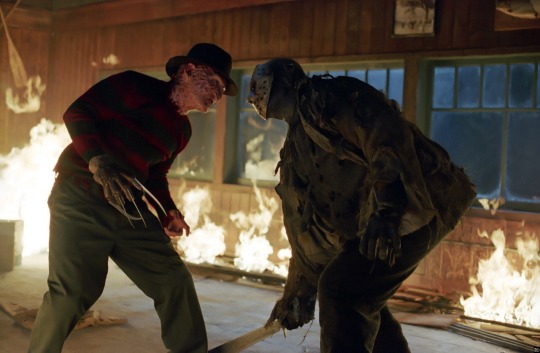
I came around on Bob Seger the day the Los Angeles Lakers trades Shaquille O’Neal to the Miami Heat. I was driving home from work and the news came on the radio. Devastated, I actually pulled the car over and sat there for a bit, trying to process this. So, I switched the radio station over to KLOS (LA’s classic rock staple since 1967) and there was fucking Bob Seger, singing about working on his night moves. Somehow that song comforted me, and I started singing along (back then, you could hate something, yet still have heard it so many damn times the lyrics were still tattooed on your memory—doubt that’s very possible in the streaming age). It hit me so damn hard . . . I’m getting old. My best years may or may not still be ahead, but there were enough of them before me that I had to at least consider the possibility they might be behind me. Seger was my rite of passage into becoming middle aged.
It took me much longer to come around on FREDDY VS. JASON. In fact, I only came around last night, nearly 14 years after I discovered the joys of Bob Seger. My fiancée really wanted to go to a screening of FREDDY VS. JASON at the Chinese Theater in Hollywood. It was being hosted by Screamfest LA, a local organization of passionate people dedicated to spreading the gospel of horror films past, present, and future. Brian Collins—the excellent film critic at Birth.Movies.Death, whose Horror Movie A Day site is the stuff of both legend and legendary masochism—was set to host a Q&A afterwards with the movie’s writers, Damian Shannon and Mark Swift. Despite really disliking the film upon release, I figured it was a good time to revisit. It’s also never a good idea to disappoint one’s fiancée.
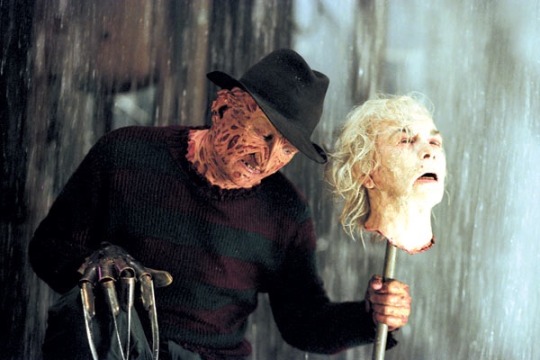
The theater was packed, busting at the seams with a wide age range of people—thankfully, no kids—humming at the same frequency as this movie. Throughout the film, there were whoops and cat calls and cheers. People even ironically cheered the nu-metal song clanging over the closing credits. I found myself to be one of those people. Younger me, who had been late boarding the Bob Seger train had transformed into an older me, late boarding the FREDDY VS. JASON express. I no longer saw it as a letdown—the last gasp of dying franchises looking for renewed cultural relevance. Instead, it was a celebration of everything that made both franchises so much fun to watch and re-watch, even the really bad ones, like A NIGHTMARE ON ELM STREET 5, or JASON TAKES MANHATTAN: the campiness, the suspense, the stupid kids, the creative kills. Sure, Freddy still does Kung-fu, but it wasn’t annoying this time; it was charming to think he could bring Jason down with some roundhouse kicks.
FREDDY VS. JASON is a bloody Looney Tunes cartoon, packed wall-to-wall with some batshit crazy stuff. Freddy starts as Jason’s puppet master, bringing him to Springwood to kill some kids because he’s still trying to regain his strength from his last failed attempt to kill every teenager on Elm Street. He needs them to start being afraid of him again. But Jason is a shark, eating everything in sight. The more surgical Freddy gets angry that all his victims are being poached, so he finds himself at war with Crystal Lake’s chief export. There’s also a group of Springwood teens involved because the movie needs slasher fodder. They are a fun group, though, led by a sassy Kelly Rowland whose main trait is an obsession with getting a nose job.

It’s that cartoonish aspect that finally made me see the genius in this movie. Freddy and Jason were no longer able to be the sinister, truly scary monsters of my youth. They were now Bugs Bunny and Daffy Duck. They were Bob Seger. And I realized just how much joy there is to be had in this. Certainly the writers had a blast. Shannon and Swift recounted their writing process with glee, even though turnover in New Line’s management forced them to fight for this movie’s existence like one of their terrorized teens fighting to wake up before Freddy could slice and dice them with his claws and a one-liner. Their passion showed in what was on screen, and it was infectious.
I may be getting older, but that’s okay. No one takes the elderly very seriously, whether they be waxing poetic about late night hookups in the Hollywood Hills, or fighting to the death over who gets to kill a group of horny teens.

#freddy vs jason#a nightmare on elm street#friday the 13th#freddy krueger#jason voorhees#horror film#slasher films#screamfest#dad rock#bob seger
3 notes
·
View notes
Link
0 notes
Link
Such an eclectic mix this week. We start with a little Zarathustra, then go all doom and gloom with metal lords YOB. Julien Baker makes some “Appointments.” “The Hammer” is laid down by Rolling Blackouts CF. Tame Impala reminds us that we are a “New Person, Same Old Mistakes.” Snail Mail returns to the list to tell us about the “Heat Wave.” We also get an unreleased gem from the Velvet Underground, courtesy of the season finale of BILLIONS. Newer indie rock outfits like Low Cut Connie and Oso Oso bring us some killer grooves. Bagpipe centric cover band the Red Hot Chili Pipers gives us the fun medley of “Highway to Hell/Sweet Child Of Mine/Smoke on the Water/Thunderstruck.” And we close this week with Kid Cudi’s heart wrenching mantra “Reborn” from his new album. This is a strange week in music, but it makes for worthwhile listening.
#yob#julien baker#rolling blackouts coastal fever#snail mail#billions#velvet underground#low cut Connie#oso oso#red hot chili pipers#kid cudi#nowplaying#new music
0 notes
Link
In the aftermath of Kanye’s most “meh” album ever, this week has been light on great new releases. However, Neko Case’s new album “Hell-On” gives us this delightful track, “Halls of Sarah.” Snail Mail’s debut album is super “Pristine,” and Car Seat Headrest’s remake of their 2011 indie favorite album “Twin Fantasy,” punches up the dynamic and lyrically powerful 13-minute epic, “Beach Life-In-Death.” But my obsession this week has been with Father John Misty’s “God’s Favorite Customer.” Story is this was written during a stay in a hotel after separation from his wife. The dark humor and confessional nature of the songs got me thinking of other great “hotel” songs. So, the front half of this list features both songs new and old about hotel life. We get the lounge singing alienation of the Arctic Monkeys, Leonard Cohen’s remembrance of an afternoon with Janis Joplin, Elbow’s pining over lost love, Elvis Costello’s nightmarish visit to Tokyo, and Pink Floyd’s rage against the Wall. So, hope you enjoy.
#new music#nowplaying#neko case#father john misty#arctic monkeys#leonard cohen#elvis costello#pink floyd#snail mail#car seat headrest
2 notes
·
View notes
Text
HAPPY DEATH DAY (2017)
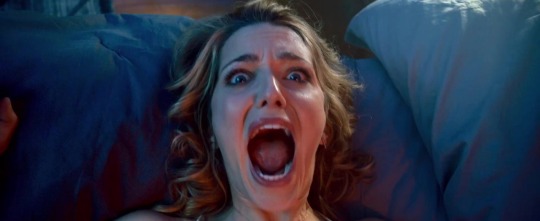
Credit Blumhouse for understanding that often the most enjoyable horror films are the cheapest, most anonymous, and most flawed films on the market. For around $5 million, Jason Blum can produce a profitable movie that doesn’t even have to be good to justify its existence. Take THE GALLOWS, for instance. But thankfully Blum likes making good movies, which means more often than not he’s going to put out something exceptional at best (GET OUT, THE GIFT), or entertaining at worst (THE VISIT).
HAPPY DEATH DAY falls somewhere in the middle of these poles. It is too deeply flawed to be exceptional, but definitely more than simply entertaining. The film’s high-concept premise — GROUNDHOG DAY meets HALLOWEEN — is a winning formula. However, the execution is hit-and-miss due to some major problems with its red herrings and murder mystery killer reveal. The performances of the two leads, Jessica Rothe and Israel Broussard, are charming and vital enough to keep the movie from getting crushed under the weight of the plot, though, which goes a long way to making this goreless PG-13 film feel more substantial than your average R-rated cardboard character massacres.
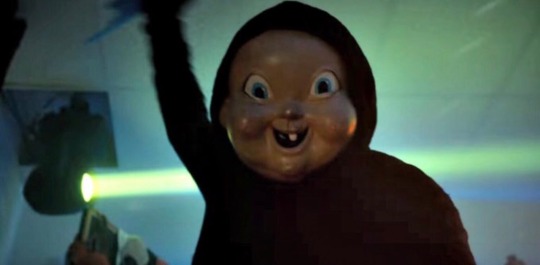
We open with Tree (Rothe) waking up in the unfamiliar dorm room of Carter (Broussard) after what was obviously a night of excessive college drinking. Embarrassed, annoyed, and extremely bitchy, Tree takes off and endures the walk of shame back to her sorority house where she’s accosted by the charter president, and chided a bit by her roommate. The roomie clues us in that today is Tree’s birthday by presenting her with a homemade cupcake. It becomes apparent very quickly that Tree hates her birthday* because she makes an excuse to cut out and drops the offending cupcake in the trash.
Tree’s life is pretty eventful. She is having an affair with one of her professors. There are lunchtime sorority meetings to attend that test the limits of sisterhood, human decency, and race relations on college campuses. She also spends time being irritated by college boys who randomly show up demanding to know why she isn’t returning their text messages. Her dad calls a lot, and she ignores him as well. But she likes going to parties, especially on consecutive nights. The only problem with this one is that there’s a slasher killer with babyface mascot** mask who successfully kills her.
We cut back to Tree, who wakes up again in Carter’s dorm room, still alive and ready to live out her death day all over again. Eventually, once the novelty of dying wears off, Carter*** convinced her to investigate potential suspects. There are a number of red herrings, some that make sense, most that don’t, but if you decide not to yank at the plot thread, it’s an enjoyable ride that results in a number of fun kills.
Yet, it’s hard not to want to tug at the threads. Movies that make a point to play with timelines and traditional plot mechanics invite such nitpicking. If you are inclined to engage in such behavior, HAPPY DEATH DAY will either be like a rapturous trip to the Golden Corral or it will be the stomachache later that night. Outside of a couple thoughts about the biggest herring and a plot twist ripped out of THE DEAD ZONE that gets dropped faster than an oversexed camp counselor in FRIDAY THE 13TH, I chose to go with the flow. It made for a much better experience.
Now, I’m not sure this will be as much fun upon a second visit, but it can’t be any worse than Tree’s repeat stabbing at the hands of a babyfaced killer.
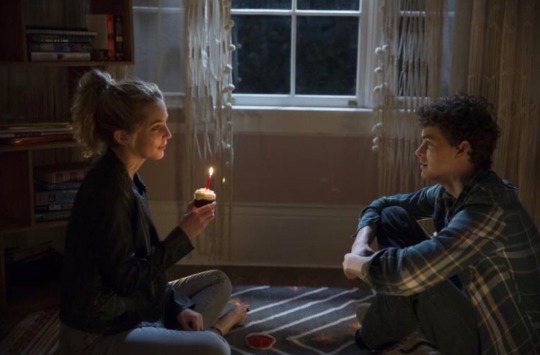
*Apparently she hates her birthday so much that she took the time to load up a birthday ringtone on her phone. Irony? Evidence of her mixed feelings about growing older?
**The college mascot is the Babies. Not sure the screenwriter spent much time considering the implications of this. First of all, who willingly goes to a school where everyone can make cry faces at them all the time? Secondly, there’s no way this school can be Division 1 in any athletic program for the reason previously mentioned. And lastly, how are there not poopy diaper jokes layered throughout this movie? I’m also assuming the writer is making a not-so-subtle commentary on Millennials being crybabies; or maybe it is subtle and ironic. I don’t know. My brain now hurts.
***As much as I liked Carter, in light of the Harvey Weinstein mess, it’s hard to be completely won over by a character whose greatest claim to human decency is that he didn’t rape Tree when she was drunk. Maybe once upon a time that seemed like a rewardable behavior for a male character in a movie, but now it just seems like it’s something that should be expected. After all, should a child get an allowance for doing the chores s/he has to do, like cleaning their own bedroom, or for doing the chores that require effort and sacrifice, like lawn mowing, or vacuuming the entire house? Carter’s a nice guy, but let’s not give him awards just because he decided it was criminal to take advantage of a drunk girl.
0 notes
Text
Why Tom Petty Mattered (To Me)

Last night, I watched Runnin Down a Dream, Peter Bogdanovich’s 4-hour documentary about Tom Petty. Today, as I drove to physical therapy, I put on Petty’s 1989 masterwork, Full Moon Fever. Both experiences took me back to days long gone, when Tom Petty’s music served as a soundtrack for my life. It was in this reflection that I realized why Tom Petty mattered — at least to me.
Tom Petty never came across as a great artist. Dylan, Springsteen, Young, Patti Smith . . . they held that title. Listening to them was like going into a museum to appreciate exhibitions of greatness. Petty, on the other hand, was that cool poster on your wall that you didn’t want to take down, even as you had to tape the worn edges. Other artists were the gourmet dinner out that you bragged to your friends about. Tom, though, he was that comfort dish mom whipped up in an instant because she always had the ingredients on hand and love in her heart. Listening to the greats was a trip to a Broadway show; Tom was putting on your favorite DVD for the hundredth time because it helped you sleep, or concentrate, or just feel right.
Tom Petty never came across as a great artist. That was his genius. He came from humble Southern roots, made his career out of hustle and passion, and never grew tired of Rock N Roll. He worked with legends — Jeff Lynne, Stevie Nicks, Roy Orbison, Johnny Cash, Dylan, George Harrison, Ringo — and they were honored to work with him. The Heartbreakers had one of the great guitarists in Mike Campbell and keyboardists in Benmont Tench, and Petty never left them behind when the lights grew bright and the adulation grew loud. Tom Petty was humble, and simply excelled doing what he loved.
But Tom Petty never came across as a great artist. Even as his lyrics told indelible stories that connected across generations, ethnicities, and genders, he was seldom exalted as a great Rock N Roll poet. Yet, his words stay on the tongue, leaving a delicious after taste.
“Even the losers get lucky sometimes.”
“Well she was an American girl, raised on promises.”
“Somewhere, somehow, somebody must’ve kicked you around some.”
“She’s a good girl, loves her momma, loves Jesus and America, too.”
“Excuse me if I have some place in my mind where I go time to time.”
These examples barely scratch the surface. I have a top 10 playlist on Spotify for Tom Petty songs that has 30 songs in it because I don’t know which ones to cut.
Tom Petty never came across as a great artist. He came across as one of us. He was a normal guy getting by who knew how to put our views in song. There were no mountaintops where God was giving him inspiration, no drug-fueled, Dionysian revelries to draw from. Tom Petty was a worker, like us, picking up his axe and going into the studio or on to the stage to do the job. The result was a decades spanning career with a songbook that rivals those of the Greats, and a legacy of consistent brilliance.
Of all the great musicians we’ve lost these last two years — Bowie, Prince, Chris Cornell — Petty meant the most to me. He was the guy I turned to when I needed comfort, even as other artists dominated my thoughts and praises. I never bragged about Petty like I did Nirvana, or Pearl Jam, or the White Stripes., but I probably listened to Full Moon Fever and Wildflowers more than any of their albums. It wasn’t cool to love Tom Petty, but Tom Petty was always cool. He always made me feel cool.
So, if you aren’t listening to Tom Petty this week, do yourself a favor and drop a needle on any of his albums. He’s not around to be taken for granted anymore, which means now he can finally take his place among the Greats.
Photo courtesy of Brian Donnelly.
67 notes
·
View notes
Text
AN ATHEIST KING: THE LOSS OF BELIEF AND CHARACTER IN MUSCHETTI’S IT (2017)
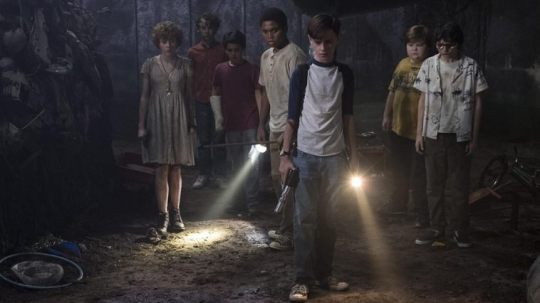
This essay features several spoilers for IT (2017). You have been warned.
A DISCLAIMER BEFORE WE BEGIN
I was, at one point, a hard core Stephen King fan. When I entered my 20s, I owned every book written by him in hardcover -- with the exception of special edition stuff like My Pretty Pony -- including several first editions (like a beautiful first of The Shining). My copies of George Beahm’s The Stephen King Companion and The Stephen King Encyclopedia were already dog-eared and annotated. My prize possessions were the four issues of Magazine of Fantasy & Science Fiction I had which featured the first publication of The Gunslinger, and the other I had which included “The Moving Finger.” My parents thought I was weird, most girls thought I was scary, and at one point even my grandma suggested I seek therapy.
This was until about 2000. Then, an event took place which caused me -- like those in the Loser’s Club -- to abandon childish things. It was a bad decision, but I gave up my Stephen King collection.
I didn't rediscover my love for King until recently. Sure, I dabbled a bit these last few years, reading Under the Dome and 11/22/63, but I never fully re-embraced the hero of my youth. Until I decided to re-read IT, his 1986 masterpiece about a group of wounded people forced to face a truly terrifying force as both children and adults. I saw that Andy Muschetti was adapting the novel for Warner Bros., taking over for Cary Fukunaga, who -- despite being a true auteur -- fell out of Warner’s graces. All news surrounding the new adaptation was overwhelmingly positive, and it had been a long time since we last saw a great movie based on King’s work.
Back in April, I broke my right hip. After two surgeries, being fairly immobile has given me time to read more, so I picked up IT. Revisiting IT transported me back to that time when I was obsessed with King. The experience was overwhelming, like when adult Bill Denborough gets back on his enormous metal steed, Silver, and recalls how he once raced the devil on that bike to save Eddie Kaspbrak. A flood of joy came from reading King’s pulpy prose again. Going back to that tainted town of Derry to hang with the Losers helped make my rehab a little easier. And though I am still on the mend, I am ready to rekindle my love for King.
Which brings me to my other love: cinema. I don't write much about the movies anymore, but I am chomping at the bit to discuss and evaluate IT. There hasn't been a more anticipated film this year for me.
And no film has both pleased and disappointed me more.

WHAT MAKES A GOOD KING ADAPTATION?
Because of The Dark Tower, IT, and the forthcoming Gerald’s Game, there have been lots of clickbait “Stephen King Movies . . . Ranked” lists popping up online. Nerdist had a particularly interesting one, in which their top 10 looked like this:
10. Creepshow (1980)
9. IT (2017)
8. The Dead Zone (1983)
7. Dolores Claiborne (1995)
6. Stand By Me (1986)
5. The Mist (2007)
4. The Shining (1980)
3. Carrie (1976)
2. Misery (1990)
1. The Shawshank Redemption (1994)
Despite the ranking, most King fans and movie lovers alike will agree with this list (although Creepshow over Pet Sematary or Christine? Really? Sincerely?). Two of these films are directed by Frank Darabont (Shawshank, The Mist), and two by pre-what-the-f-happened Rob Reiner (Misery, Stand by Me). And the new adaptation of IT made the cut. So, if we can acknowledge these are the canonical King adaptations, what makes them the best? It's a pretty steep drop off in quality after the top 10. There's Pet Sematary, Christine, 1408, and The Green Mile, meaning that out of 44 movies based on Stephen King’s novels (not including TV mini-series), there’s really only about 14 good-to-great ones. If this were baseball -- King’s favorite sport -- Hollywood would be batting a respectable .318. Be that as it may, this is not baseball, and producing only 1 solid movie for every 3 is pretty awful.
This suggests that adapting Stephen King is tough. Why, though? His books are packed with memorable characters, scenes, and visuals. You could almost say he writes movies. His dialogue is colloquial and specific, and he has a great sense of pacing. While you could easily point out that lots of his stories share only a couple variations for endings -- destruction or aliens -- he is a strong storyteller with a keen understanding of cause and effect and narrative fairness. There's a reason, after all, that he inspired a generation of writers and filmmakers like JJ Abrams, Damon Lindelof, and the Duffer Brothers.
My theory is that King's greatness resides not in his ideas or execution, but in the spirit of his writing. King's voice is the soul of his work. When you read him, it feels like you are sitting down with a friend, listening to him share a great story. King feels familiar, like family. And the filmmakers who get that make films which reflect it.
Take, for example, the number 1 film on Nerdist’s list, The Shawshank Redemption. The use of Red’s voiceover narration immediately brings us into the tale of Andy Dufresne. Stand By Me and Dolores Claiborne also use great voiceovers. But in films like Misery, Carrie, and The Dead Zone, we are given protagonists who become our friends. We find Paul Sheldon to be kind and thoughtful, Carrie White to be sweet and misunderstood, Johnny Smith to be tortured and alone. These films understand deeply what King was aiming for with his characters. So, when Reiner changes events in Misery, it doesn't matter because not only did he truly “get” Paul, he also truly “got” Paul’s relationship with Annie Wilkes. Each of the films on this list, with the exception of IT (and Creepshow because it was an original script), truly grasped the core of King’s characters and their relationships to each other.
King is often considered a humanist author. His characters, including his villains, are often subjects for sympathy. In his work, there is a lot of insight into human nature, both light and dark. King is an observant author, grounding his most supernatural stories in a real world, with real people. This is best illustrated in his character relationships and interactions. Red and Andy develop first respect, then admiration, then deep friendship over their years in Shawshank. It is a relationship founded on honesty as they are the only honest men in the prison. Their mutual trust is what establishes the foundation for Andy’s escape plans, and ensures his success. In The Dead Zone, Johnny’s broken relationship with Sarah is haunted by lust and vitality, the very qualities Johnny loses touch with after his accident leaves him with a power which zaps the life from him with each use. Carrie White’s naive hope she can actually fit in is fulfilled by the compassionate Tommy Ross, which makes the tragedy of her coronation that much more devastating. The films capture these ideas to profound effect, which is why they endure. Once the novelty of plot dissipates, you are left with characters and their connections to each other and yourself. We enjoy a movie for plot; we love a movie for character.
King writes wonderful characters, and the best films based on his work never fail to capture those characters ideally.
Except IT.
Sigh.
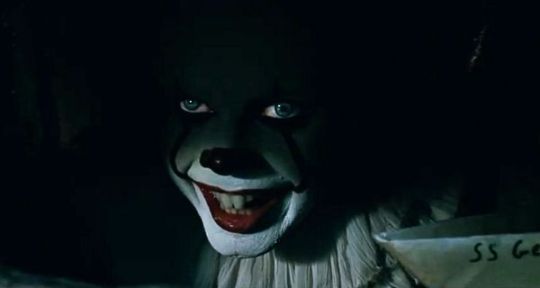
THE PART WHERE I EXPLAIN WHY THE NOVEL IS A MASTERPIECE
It is not hyperbole to call IT “King's masterpiece.” Lots of critics have done it. By its publication in 1986, IT was the purest, most ambitious distillation of themes and ideas King had explored since Carrie in his fiction (and even in non-fiction dissertations like Danse Macabre). If you're reading this, chances are you know the story:
Every 27 years, the seemingly quaint hamlet of Derry, Maine becomes the feeding ground for an entity that has dwelled under the town’s surface for centuries. In 1958, after 6-year old Georgie Denborough is murdered by the creature -- assuming the shape of a murderous clown called Pennywise -- big brother Bill and his Losers Club come together to put an end to the evil. They are only marginally successful, as 27 years later, the Losers are called to return to Derry to kill IT for good.
IT is a multi-generational horror novel, spanning hundreds of years. We meet the Losers first as adults, all of whom (with the exception of Mike Hanlon, who chose to stay behind in Derry and become its resident historian and librarian) no longer remember the events that took place during the summer of 1958. Mike’s ominous phone calls, reminding the adults of the promise they made -- to return if IT ever resurfaced -- unlocks each adult’s dormant memory. As the novel unfolds, so does their collective remembrance of summer ‘58 and all the horrors it contained. King uses the flashbacks to highlight the differences between childhood and adulthood.
As with any epic sized novel, there are a myriad of themes to unpack. IT dives deep into ideas about childhood trauma, the power of personal shame, community corruption, racism, generational sin, and the coming of age ideas expected from a novel about kids becoming adults. For me, where the novel finds its most compelling thematic territory is in its exploration of belief. King wants us to recognize it is the purity of innocence, and the simplicity of belief that binds these kids together, and that the jaded cynicism of adulthood, with all its fears and anxieties, is what threatens to destroy them.
This theme hinges on the role of Pennywise. He is a shapeshifting, Lovecraftian monster, tapping into the fears of his quarry to exploit during the hunt. He appears to Ben as his dead father, to Mike as a pterodactyl-like bird, to the germaphopic Eddie as a leper, and to Richie as the lycanthropic Michael Landon in I Was a Teenage Werewolf. When Pennywise goes after Bev, it is by turning her sink into a geyser of blood which only she can see. Bill is tormented by the memory of his dearly departed brother, whose school photograph Pennywise animates and makes bleed. Children have very primal fears, and that which adults see as fake or absurd, kids often embrace as real. Santa Claus, the Easter Bunny, chupacabras, zombies . . . children do not reject fantasy outright as adults do, making them susceptible to both profound fear and hope.
We see this in the Losers’ response to IT’s attacks. They are terrified, but never stop seeking solution. They find their weapons in objects. Even after he learns his asthma inhaler is a mere placebo, Eddie still uses it to calm his nerves, and later fires it at Pennywise, believing its contents to be battery acid. With Bill’s help, Ben melts down two silver dollars into bearings for Bev to shoot at the monster with a slingshot. When Stan gets trapped by Pennywise after finding himself alone in the house on Neibolt Street, he manages to escape by chanting the names of every bird contained in his field guide. The kids build an underground fort, which they convert into a smoke house to go on a Native American “Vision Quest.” It is during this dangerous endeavor that Mike and Richie seem to travel through time back to a primordial era where they witness IT’s arrival. The Losers’ passionate adherence to ritual and talismans give them a collective power. This power keeps them unified, and even frightens their tormentor. Belief is their truest weapon, especially belief in each other.
The other themes King addresses throughout IT are compelling, but it is this idea about belief that gives the novel its soul. There is no cynicism in King's approach -- he captures the imagination of these children with remarkable affection, and this results in each kid winning our hearts over. Pennywise may be the allure the book needs to attract its audience, but these kids are what inspires guys like me to re-read a 1,000+ page book.
They are also what inspired me to struggle with a movie engineered for my celebration.
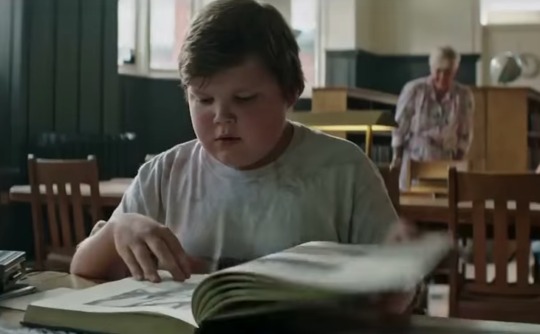
IN PRAISE OF MUSCHETTI’S IT
Before I tear apart IT, which is very popular, having made over $200 million domestically in its first two weekends, I want to praise it. Despite having some huge issues, the film does some things very well. There is a good reason why this movie works for so many people.
The major reason IT works is because of its energy and general nostalgia. While these elements often fade on repeat viewings, they are so engrossing during a first one. Being set in 1989 puts the setting during a period Gen Xers remember fondly and for which Millennials pine. Movie theater marquees are showing Batman and Lethal Weapon 2. A poster for A Nightmare on Elm Street 5 is a coming attraction. The kids ride Schwinns, use Kodak Carousels, don’t have cell phones, and wear denim cutoffs. The aesthetic is perfect. Producer Seth Grahame-Smith revealed in an interview with Birth.Movies.Death that he prepped nostalgia lists for all of the child actors, from music to movies to video games to fashion as a way to show them what summer ‘89 in New England was like for him. The work paid off, because the town of Derry is authentic in its nostalgia. It is impossible not to be drawn into this world.
And this world is scary, even without Pennywise. As with all idealized nostalgic perspective on days long gone, there is a darker undercurrent (as if we punish ourselves for embracing such idyllic memories). Perhaps the darkest element are the adults of Derry. Kids go missing and the “Missing Persons” posters are simply papered over as new children are added to the list. A leering pharmacist flirts with Bev. In the library, as Ben investigates Derry’s ugly history, the Librarian lingers in the fuzzy background, grinning maliciously. Not one adult exhibits empathy for these kids, including Bill’s dad or Stan’s rabbi father. Certainly not Bev’s father, who inhales his daughter’s hair like she’s fresh out of the oven, and obsesses over her virginity with a fervor that would make even President Trump uncomfortable (or envious, if we're being honest). In some ways, the more visceral nature of the film captures Derry’s innate badness more clearly than the hundreds of pages King devotes to the subject in his novel. Sometimes a picture is worth a thousand pages.
Muschietti and his casting director also got the casting perfect. As with the films of JJ Abrams, criticize all you want, but it's impossible to trash the impeccable casting choices. Each of these kids perfectly embodies the characters they portray. Kudos especially go to Jeremy Ray Taylor, Sophia Lillis, Jack Dylan Grazer, and Finn Wolfhard as Ben, Bev, Eddie, and Richie. Ben’s beautiful sensitivity, Bev’s intense devotion and passion, Eddie’s passive-aggressive resolve, and Richie’s unending stream of bullshit are as sharp and resonant here as they are on the page. Even Jaeden Lieberher, as Bill, and Chosen Jacobs, as Mike, look and feel right. Unfortunately, the script makes some poor choices with their characters that nearly derails the film. But more on that in a bit. Without a doubt, these kids are legit actors. No scene better proves this than the swimming scene in which everyone is stripped to their underwear and dives into the lake from the frighteningly high cliff. The scene could have been incredibly exploitative as the boys ogle Bev, but instead the quality of these performances makes their pubescent sexual discovery innocent and real. Consider this a great contrast with the perverse exchanges Bev has with the adult world. It is both ironic and terrifying that Bev is perceived more as an object by adults than by teenage boys.
While the film finds many of its most effective scares in the presentation of Derry, and the juxtaposition of innocent and corrupt images, the advertisements promise that we will be scared senseless by Pennywise the Dancing Clown. As portrayed by Bill Skarsgard, this Pennywise bears little resemblance to the seductive, menacing clown Tim Curry created for the 1990 ABC television miniseries. Skarsgard’s Pennywise is serpentine, alien, with dead eyes and a slithering voice. His costuming suggests his age, and the cracks in his makeup reveal a facade. This Pennywise is less playful and charismatic, and hungrier. He drools as he corners the kids in the Neibolt house. And his shapeshifting is frightening, especially when he presents himself to Eddie as a relentless leper. Skarsgard’s performance is wonderful and wholly his own. He will invite comparisons to the iconic Curry, but ultimately his Pennywise will stand alone.
IT’s success as a film can be broken down into these three elements: Derry, the kids, and the creepiness of Pennywise. But its failure can also be broken down into three parts, too.
1) The absence of a thematic soul
2) The abandonment of characterization
3) The confusion of style for substance
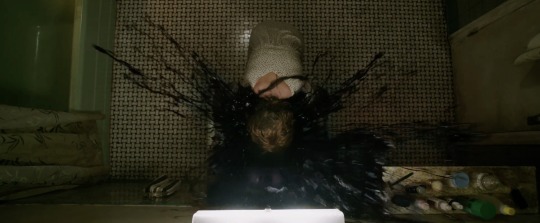
A LOSS OF SOUL
A great adaptation isn’t necessarily about doing the book, but about capturing the soul of the book (or finding a soul no one even knew existed, ala The Godfather or The Shining). A movie can look the part, but if it fails to reveal that essence of spirit, it will eventually crumble. In the case of IT, the movie is about as hollow as the space behind Pennywise’s eyes.
The soul of this story is the children's belief. Outside of a generic, “We gotta believe in each other!” idea to which much lip service is paid, these kids are bereft of belief in anything. This is an atheist interpretation of Stephen King's story, in which our Loser’s Club prefer brute force over imagination. In the film’s climax, Bill leads the charge against Pennywise by picking up a bat and swinging at the clown’s head. All the Losers join him. The result looks remarkable, as each strike causes the clown to transform into each child's fear, but it is a graceless, uninspired physical solution to a metaphysical problem. It also ruins Pennywise. How evil can he truly be when all it takes is an angry mob armed with sticks to bring him down?
Throughout King's novel, the Losers seek many ways to defeat the demon. They melt down the silver dollars. Eddie’s inhaler becomes a chemical weapon. Stan’s bird book is a shield, the names of the birds his mantra. And the kids buy into Native American rituals, like the Ritual of CHUD, to confront IT. Obviously, the shift in setting from the 1950s to 1980s meant losing some of these talismans. After all, the 50s Wolfman, when compared to the 80s Freddy Krueger, is a flaccid nightmare. But every monster has a weakness, even human ones. The Losers spend no time thinking on this.
Indeed, Muschetti strips them of their creativity completely. Gone is Ben’s architectural acumen, which nearly flooded the Barrens and provided an underground club house. Bill’s storytelling, which keeps the group focused, is generically spread amongst all of them. Even Bev's love for fashion and art is lost. It's shocking to me how Muschetti removed the core elements from each of these characters, leaving only their gimmicks -- Bill’s st-st-stutter, Ben’s girth, Bev’s cigarette smoking, Richie’s humor, Eddie's hypochondria, Stan’s Judaism, and Mike’s blackness. In the need to appeal to every demographic, these characters were stripped for parts.
It is a testament to the strength of the performances by this group of kids that the Losers have any flavor whatsoever. The script provides them no depth, only set pieces and surface sentiment, yet they are convincing for awhile in the dark. But like Pennywise’s many facades, eventually they slide off and there's nothing remaining.
The soul of King's story is belief, imagination, and the collective power of childlike purity. Andy Muschetti’s adaptation is more in love with Halloween maze scares than it is with pursuing these ideas. His vision of defeating our fears involves angry children with sticks, not wounded children with imagination. Audiences may like the cathartic release that comes with beating the shit out of the monster, but it does nothing to feed their souls.

WHO ARE THESE PEOPLE?
I already alluded to the surface qualities that pass for characterization in IT, but it goes a bit deeper than this. Character interaction is essential to building great characters, and this is where IT fails epically.
To prove this, let’s take a closer look at Bill Denborough.
Bill is arguably the most important of our protagonists, especially in King's novel. The story begins with him making a paper boat for his brother and sealing it with wax so it will float in the gutter water outside. The death of Georgie becomes a source of guilt and shame for Bill. And since his parents pay little to no attention to him, Bill is made to face these overwhelming feelings alone. It is his determination and inner strength that propels him to lead the Losers in their quest to put an end to IT. But, this quest, while certainly obsessive, is rooted in shame and love. Bill loves each of his friends and often goes off alone because he fears their fate will be his fault, as he believes Georgie’s fate to be his fault. This is the source of Bill’s maturity, which sets him apart from everyone else in the club. Because of Bill’s maturity, the Losers follow him without much question. They are devoted to him as a leader and friend, and willingly choose to lay down their lives if need be.
This is far from the way Bill is presented in the film. He is a Captain Ahab, chasing his white clown into the sewers of Derry. He likes his friends, but often doesn't concern himself with their feelings. In fact, at one point Richie throws a punch at Bill and the two fight over their pursuit of the monster. This Bill is not a leader; he is a dictator. He lacks empathy, and mostly cares for himself. Even worse, his quest is no longer rooted in shame, but in pure vengeance. Bill doesn't express his self-loathing at what happened to Georgie. Instead, at the end of the film, when Pennywise presents Itself as Georgie, Bill just punches IT in the face.
The shift in Bill is a subtle one, but has huge consequences for the story. By changing his leadership style, it makes the other Losers look more like followers of fear than a group of equals. In many ways, Bill is no different than the crazy bully Henry Bowers, whose friends follow him out of fear. Like Henry, Bill is on a mission to destroy, has little regard for the consequences of his actions, gets others involved who don't necessarily want to be, and doesn't listen to reason. Yet, we like Bill and hate Henry because Bill stutters and Henry likes carving his initials into the bellies of defenseless fat kids.
This is not to say Bill isn't the hero, but that Muschetti misfires with Bill by removing his core empathy and giving the character over completely to obsession. While the rest of the characters don't fare as badly as Bill does, each loses something, mainly through the cutting of interactions. On a basic level, we see this in the fact that Bev only interacts with Bill and Ben through most of the movie, yet is presented as the symbol of group unity. She can't even be bothered to share a smoke with Richie, or have a conversation with Stan and Mike.
Bill and Bev certainly present issues in characterization, but no character is more problematic than Mike Hanlon. There have already been several insightful thinkpieces about the treatment of Mike that there is little I can add, but the gist is this: Mike is presented as a token black character for no reason. Granted, most of these characters are tokens in their own way, so it stands to reason Mike would receive no better treatment. It was a struggle for me to watch one of my favorite characters in the novel reduced to a handsome black face that has to face the racist white bully. It was harder to watch Mike's love for history handed over to Ben. Mike deserved better.
All of these wonderful characters deserved better. This is what happens when style trumps substance.
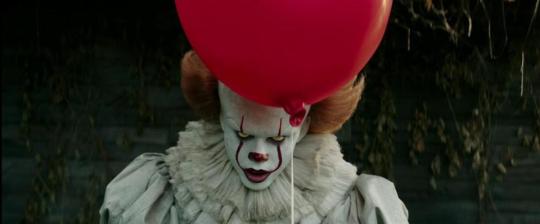
THE NEW HORROR AESTHETIC
IT is the culmination of the trend in cheap seat horror to rely on the jump scare as the source of terror. No horror film of this variety has handled this trope better than Muschetti’s film. Arguably, Muschetti has perfected the jump scare. His film is a maze at Knott’s Scary Farm or Universal’s Halloween Horror Nights waiting to happen. The soundtrack is pitched to screamtastic levels. Put a camera on audiences and every 5-7 minutes, prepare to see people grabbing each other or jumping like William Castle had come back from the dead to put a tingler in their seat.
This reliance on the jump scare is aided by a color palette washed in sepia tones and deeper reds, which enable the clown to do his Jack-in-Box routine in darkness that can't elicit laughter. Muschetti and his postproduction team nailed the look of this film like mad scientists.
The beauty of this is that audiences love IT. This is a horror movie that feels like a horror film. Yet, IT remains safe, like those scary carnival mazes. When you're creeping your way through one, every darkened corner promises danger, but behind all that tension you know none of the masked employees can touch you without legal repercussion. Sadly, IT isn't allowed to touch you either. Promises of danger lurk around every shot, but it is all bark and no bite.
Take the Neibolt Street House sequence. There's a clever moment in which Bill and Richie, separated from Eddie, try to find him before Pennywise gets him and are presented with three doors to escape. The doors are labeled “Not Scary,” “Scary,” and “Very Scary.” Of course the boys take the first one, and are presented with a frightening image. You would imagine they would be forced to take the third door, but instead they double down on the “Not Scary” path and are rewarded for their cowardice. This is the ultimate in style over substance. The scene looks perfect, but says and does nothing.
Still, the aesthetic is convincing. This is how we want horror movies to look, even if they have nothing to say.

THE IMPLICATIONS OF IT
Since Warner Bros.’s sinks are exploding with dollar bills right now, IT will have a seismic impact on the popular culture landscape. Some things are inevitable: we will get a “Chapter Two” featuring the adults returning to Derry for a final showdown with IT. We can also expect more horror movies. Will we get more clown flicks? I'm sure there's plenty of those being prepared for VOD as I write this.
What I am more concerned about is the state of horror film. Over the last decade, we have seen a renaissance in indie horror. Get Out, It Follows, The Babadook, The Witch, The Invitation, Cheap Thrills, Starry Eyes, Goodnight Mommy, and Raw are a few of the most notable titles. This movement has brought a variety of styles and an emergence of new voices unlike anything we’ve seen since the 70s. Even a big budget haunted house franchise like The Conjuring reinforced the brilliance of James Wan and reminded us of the power in the traditional horror story amidst all the rebels.
IT feels like a sea change, though. The Conjuring made tons of money, but it didn't make this kind of money. And while The Conjuring felt traditional, IT is being presented as something new. People are talking about it like it's different. Joe Hill, King's son and respected novelist, called IT “one of the five best horror movies I've ever seen.” This movie is a hydrogen bomb on pop culture, especially as it arrived on the heels of the poorest performing summer box office in 20 years. This movie isn't just new, it's a savior.
So while we can expect more Stephen King remakes and adaptations, we can also expect less money for horror indies. Studios will want more movies to look and feel like IT, and in this narrowing marketplace, that has the potential to choke out the little guy. This is the true horror.
I hope I am wrong. Horror films are cheap to make. That is their appeal for young filmmakers looking to make a mark. Hopefully this doesn't change.
The Stephen King fan in me celebrates the love IT is receiving around the world. The cinephile in me is afraid of what this means for horror cinema going forward.
#IT#Stephen King#Film Adaptation#Horror Movies#Finn Wolfhard#Sophia Lillis#Jeremy Ray Taylor#Chosen Jacobs#Jack Dylan Grazer#Andy Muschietti#Bill Skarsgard#Film Analysis
34 notes
·
View notes
Link
0 notes
Text
Remembering John Cazale
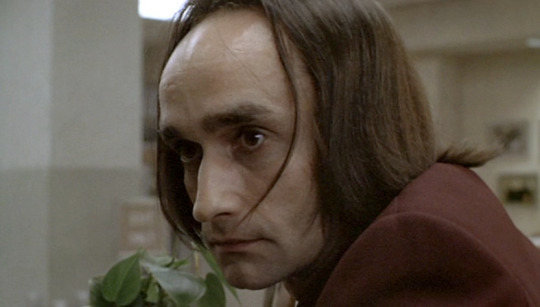
As I was leaving the gym today, I turned on the radio to listen to some sports talk. On ESPN 710 here in Southern California, Mason & Ireland were talking about the struggles facing the Lakers organization. Today’s big news was that Jim Buss -- whom, last month, was replaced as director of basketball operations by none other than Lakers legend Magic Johnson -- stepped down from the Laker’s Board of Directors. His sister, Jeannie, is now the sole owner of the team. Since their father, Dr. Jerry Buss, passed away in 2013, the Lakers have been a team in turmoil.
Steve Mason -- a cinephile who is co-owner of the Cinema Palme D’or in Palm Desert, CA -- compared the situation to that facing the Corleone family in The Godfather saga. Despite this being a completely appropriate analogy, it led Mason to go on a tangent and talk about the great actor John Cazale as he compared Jim Buss to Cazale’s iconic character, Fredo Corleone.
I wasn’t able to listen to much more, as I had just gotten home and needed to eat lunch, but the discussion got me excited to research John Cazale a little bit. Just one look at his Internet Movie Database page is enough to give any actor major career envy.

The Godfather, The Conversation, The Godfather: Part II, Dog Day Afternoon, The Deer Hunter. Five movies. All five were nominated for Best Picture at the Academy Awards. Three of them took home the top prize. As for himself, he never scored an Oscar nomination, but did earn a Golden Globe nomination for his portrayal of Sal, Al Pacino’s partner-in-crime, in Dog Day Afternoon.
On the radio show, Steve Mason referred to Cazale as a “good luck charm,” and it’s hard to argue. Has any actor had a better batting average than .1000? Five movies, five Best Picture nominees. All bona fide classics. All directed by legendary directors, starring Hollywood’s greatest performers. But Cazale was more than just a well-regarded rabbit’s foot. Meryl Streep, Cazale’s girlfriend at the time of his passing from lung cancer, called him “monomaniacal” about his craft, which she claimed caused everyone else on the cast to “take their own games up a notch.” Pacino loved Cazale so much, he called him his “acting partner,” and said, “All I wanted to do was work with John the rest of my life.”
Over the years, Cazale’s work has become widely influential and acclaimed. What seems to make him so fantastic was his commitment to being vulnerable. All actors have to be open and vulnerable, but when you see Cazale’s eyes, there is a different look in there -- it’s like a deep well with a desperate child waiting at the bottom. His reactions to his actors is so real and authentic that you can’t believe his character is a fiction.
Let’s look at a few clips of Cazale’s best work and just appreciate the greatness.
youtube
In this scene from The Godfather: Part II, Cazale one-ups Pacino as the loudest voice in the room. Sadly, Fredo is a broken, pathetic man, whose pleas for respect fall on deaf ears before Michael lays the smack down and disowns him. The greatness of the performance here is how Cazale’s body seems permanently glued to the lounging chair, unable to actually stand up against his younger, but far more powerful brother. His voice is thin and unconvincing as he bitches about being the family’s errand boy. But the best moment (around the 1:20 mark) is when he lays back, spent after all the venting, and his body goes limp as he shares the last bit of information Michael needs from him. The life drains from Fredo, and he knows he is as good as dead.
youtube
In this pivotal scene from Sidney Lumet’s Dog Day Afternoon, Cazale’s Sal is disturbed when the newscast everyone is watching about their bank robbery refers to him as a homosexual. Cazale is only in the clip for a limited time (at the 1:17 mark), but his sensitivity and hangdog look makes it clear that since he knows the writing is on the wall with this protest robbery, he wants the record made clear about himself. Watch the way his eyes drop when Sonny says, “It’s all just a freak show to them anyway. It don’t matter. It don’t matter.” That look says so much more than if he just started screaming, “Well, it matters to ME!”
youtube
Near the end of the first act of The Deer Hunter, the guys go for one last hunt before Mike (DeNiro), Steve (John Savage), and Nick (Walken) are set to ship off to Vietnam. Cazale plays Stan, their fuck-up friend, who can’t even remember to bring his own hiking boots. Mike has had it with Stan, who does not respect the hunt, and he takes out his anxiety and frustration on the clown. Cazale’s work here is quite nuanced. You can see all the entitlement wash away in seconds as he realizes Mike has told him “no” about borrowing the boots, but as soon as Nick gets out of the car, Stan regains his confidence to stand up to Mike. “You’re some fuckin’ friend,” he snaps. Each attempt to get the boots opens a new layer of indignity for Stan, and he tries to attack the one thing he knows will hurt Mike -- his sexuality. Mike is in love with Nick’s fiancee, Linda (Meryl Streep), which is why he refuses to sleep with any of the girls Stan sets him up with. As with the hunt, he respects his loyalty to Linda, too. Cazale’s petty manifestation of disrespect for Mike and their ritual is absolutely riveting, and is part of what made Cazale such a terrific supporting actor -- he used his performance not to shine a light on himself, but to make his cast mates stand out.
Lastly, I want to leave you with this cool video, in which Al Pacino talks about working with Cazale.
youtube
#John Cazale#Acting#Al Pacino#Robert DeNiro#Meryl Streep#The Godfather#Dog Day Afternoon#Sidney Lumet#Academy Awards#Best Picture#The Deer Hunter
4 notes
·
View notes
Audio
Frank Ocean is so good, he can even improve Calvin Harris by 110%. #miracleworker #NowPlaying Slide by Calvin Harris
0 notes
Audio
Put this song on repeat. Seductive midnight rhythm, and a delay that chills like the Edge on ice. #NowPlaying Replica by The xx
1 note
·
View note
Audio
Here's a list of some of the coolest new songs I've heard (so far) in 2017. My current favorites are: "Green Light" - Lorde "Darling" - Real Estate "Ballad of the Dying Man" - Father John Misty "Legend Has It" - Run the Jewels "Replica" - The xx "Payaso" - Phoenix Afrobeat Orchestra "Living in the City" - Hooray for the Riff Raff
0 notes
Audio
I can't believe I've never heard this version of "Hard to Handle" before, especially since it's by Otis. So awesome -- Black Crowes are losers, man!
0 notes
Audio
Ready for last day #Cue17! Getting inspired by some Kraftwerk - "Computer Love".
0 notes